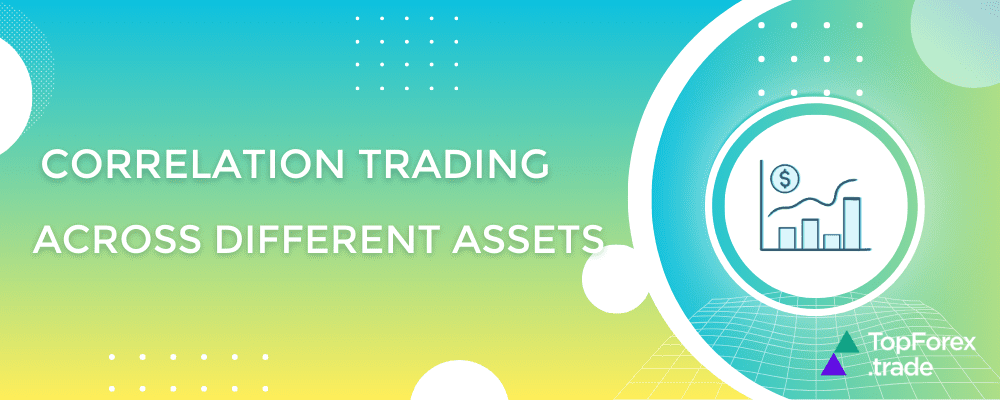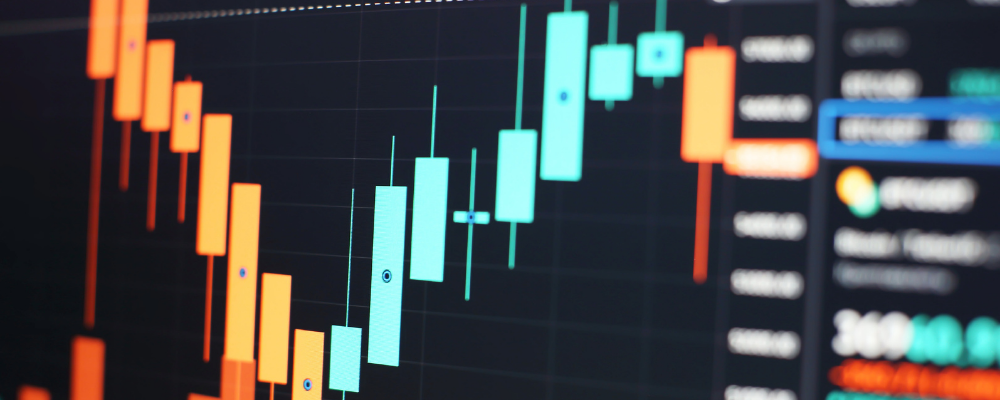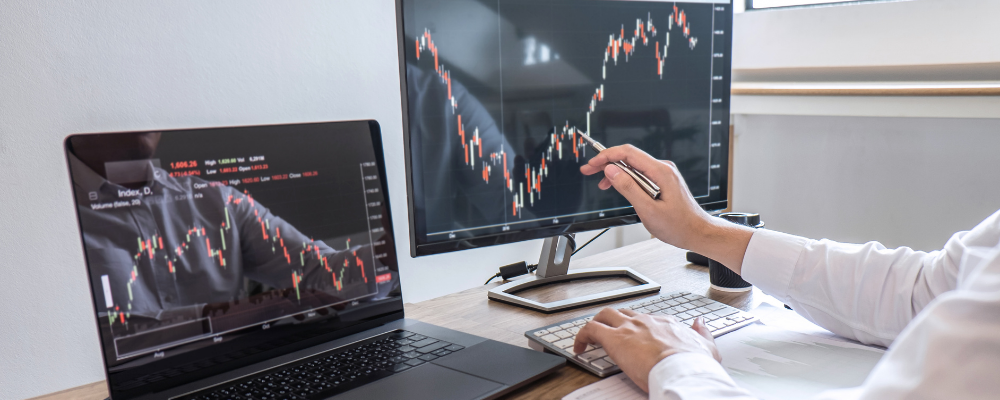Exploring correlation in trading: Forex, stocks, indices, commodities, Crypto, and others

Whatever market you trade in, success often hinges on understanding the intricate relationships between different assets. Correlation, the measure of how closely the prices of two assets move together, plays a pivotal role in this understanding. By deciphering correlation, traders gain valuable insights into market dynamics, risk management, and portfolio optimization.
This article embarks on an exploration of correlation in trading, unraveling its significance, measurement techniques, practical applications, and limitations. We’ll dissect the nuances of correlation, clarify its distinction from causation, and outline strategies for leveraging correlation analysis effectively.
Understanding correlation in trading: relationships between assets
Correlation, in the realm of trading, is a statistical measure that quantifies the degree to which the prices of two assets move in relation to each other. It provides a numerical representation of the relationship between these assets, ranging from -1 to 1. A correlation coefficient of 1 indicates a perfect positive correlation, meaning that the prices of the two assets move in perfect harmony. Conversely, a correlation coefficient of -1 signifies a perfect negative correlation, where the prices move in opposite directions. A correlation coefficient of 0 suggests no correlation, implying that the movements of the assets are independent of each other.
Why correlation matters in trading
Understanding correlation is crucial for several reasons:
- Trading portfolio diversification: Correlation helps in building diversified portfolios by selecting assets that are not highly correlated with each other. Diversification reduces the overall risk of the portfolio by spreading it across different assets, thereby mitigating the impact of adverse price movements on any single asset.
- Risk management: Correlation analysis aids in assessing and managing risk. By understanding how assets move in relation to each other, traders can identify potential sources of risk and take appropriate measures to hedge or mitigate it.
- Asset allocation: Correlation informs asset allocation decisions by guiding the distribution of capital across different asset classes. Assets with low or negative correlations can be allocated strategically to balance risk and return objectives.
In essence, correlation serves as a compass for traders, guiding their decisions in portfolio construction, risk management, and asset allocation strategies. It provides valuable insights into the interconnectedness of assets, empowering traders to navigate the complexities of financial markets with prudence and foresight.
Factors influencing trading correlations

Correlations between assets are influenced by a multitude of factors, including:
- Market conditions: Market sentiment, volatility, and liquidity can significantly impact correlations. During periods of heightened uncertainty or market turmoil, correlations tend to increase as investors flock to safe-haven assets, leading to more synchronized movements across asset classes.
- Economic factors: Macroeconomic indicators, such as interest rates, inflation, and GDP growth, can affect correlations. For instance, during economic downturns, correlations may rise as risk aversion prevails, causing assets to move more closely in tandem.
- Seasonality and trends: Seasonal patterns and long-term trends can influence correlations. Certain assets may exhibit seasonal trends or correlations that are driven by specific events or market conditions.
- Geographic regions: Correlations can vary across different geographic regions and markets. Globalization and interconnectedness have led to increased correlations among international markets, but regional factors still play a significant role in shaping correlations.
Measuring assets correlation for trading
Various techniques are employed to measure correlation, each offering insights into the relationship between assets:
- Pearson correlation coefficient: The Pearson correlation coefficient measures the linear relationship between two variables, providing a value between -1 and 1. It assumes a linear relationship and is sensitive to outliers.
- Spearman’s rank correlation coefficient: Spearman’s rank correlation coefficient assesses the strength and direction of the monotonic relationship between two variables, making it suitable for non-linear relationships and ordinal data.
By considering these factors and employing appropriate measurement techniques, traders can gain a deeper understanding of correlation dynamics and make more informed decisions in portfolio management, risk assessment, and trading strategies.
Correlation in different asset classes

Correlation dynamics vary across different asset classes, each exhibiting unique relationships driven by underlying market forces, economic factors, and investor behavior. Understanding these correlations is essential for constructing well-diversified portfolios and developing effective trading strategies. Here’s a closer look at correlations within major asset classes:
- Currency pairs (Forex)
Correlations in the currency market are influenced by interest rate differentials, economic indicators, and geopolitical developments. Major currency pairs (e.g., EUR/USD, USD/JPY) often exhibit negative correlations with safe-haven assets such as gold and government bonds during times of market uncertainty. Cross-currency correlations can also be influenced by trade relationships and regional economic conditions.
- Stocks
Correlations among stocks are influenced by factors such as industry trends, company fundamentals, and market sentiment. Stocks within the same sector often exhibit higher correlations due to shared economic drivers and business cycles. However, correlations can fluctuate based on company-specific news, earnings reports, and macroeconomic events.
- Bonds
Correlations in the bond market are influenced by interest rates, credit quality, and issuer characteristics. Government bonds typically exhibit lower correlations with other asset classes during periods of economic uncertainty, as they are perceived as safe-haven assets. Corporate bonds, on the other hand, may show higher correlations with equities, especially during times of market stress.
- Commodities
Correlations among commodities are driven by supply and demand dynamics, geopolitical events, and macroeconomic factors. While commodities within the same sector (e.g., precious metals, energy) may demonstrate higher correlations due to similar market drivers, correlations between different commodity sectors can vary significantly. For example, oil prices may exhibit correlations with energy stocks and currencies of oil-producing countries.
- Real estate
Correlations in the real estate market are influenced by factors such as location, property type, and economic conditions. Real estate investment trusts (REITs) may exhibit correlations with both equities and bonds, depending on factors such as interest rates and property market cycles. Global real estate markets may show correlations with broader economic indicators and market sentiment.
- Cryptocurrencies
Correlations in the Cryptocurrency market have gained attention in recent years as digital assets have become increasingly integrated into the financial system. While correlations between cryptocurrencies and traditional asset classes may be low, correlations among cryptocurrencies themselves can fluctuate based on market sentiment, regulatory developments, and technological advancements.
- Indices
Correlations among stock indices reflect broader market trends and investor sentiment. Major indices, such as the S&P 500, NASDAQ Composite, and FTSE 100, often exhibit positive correlations during bullish market phases and negative correlations with safe-haven assets during market downturns. Regional indices may show correlations with global economic indicators and geopolitical events specific to their respective regions.
Correlation strategies in trading

Correlation analysis offers traders a valuable framework for developing strategies that capitalize on the relationships between assets. By understanding how different assets move in relation to each other, traders can implement strategies to enhance returns, manage risk, and optimize portfolio performance.
- Pair trading
Pair trading involves taking simultaneous long and short positions in two highly correlated assets with the expectation that their prices will converge over time. Traders identify pairs of assets that historically exhibit a strong correlation but have temporarily diverged in price. By going long on the underperforming asset and short on the outperforming asset, traders aim to profit from the reversion to their mean correlation.
- Correlation-based portfolio optimization
Correlation analysis is integral to portfolio optimization, where traders allocate capital across different assets to achieve desired risk-return profiles. Modern portfolio theory emphasizes diversification to minimize risk, and correlations play a crucial role in selecting assets with low or negative correlations. By combining assets with uncorrelated or negatively correlated returns, traders can build portfolios that offer superior risk-adjusted returns.
- Sector rotation
Sector rotation strategies involve rotating capital among different sectors of the economy based on their correlation dynamics and prevailing market conditions. Traders analyze correlations between sectors to identify those with strong positive correlations during bullish market phases and rotate into defensive sectors with low correlations during market downturns. By aligning sector allocation with correlation trends, traders aim to enhance portfolio performance and reduce downside risk.
- Correlation-based hedging
Correlation analysis is instrumental in hedging against adverse market movements and mitigating portfolio risk. Traders can use correlated assets as hedges to offset losses in their primary positions. For example, an equity investor concerned about market volatility may hedge their portfolio by taking a long position in government bonds, which tend to exhibit negative correlations with equities during market downturns.
- Dynamic asset allocation
Dynamic asset allocation strategies involve adjusting portfolio weights in response to changes in correlation dynamics and market conditions. Traders continuously monitor correlations between assets and asset classes to identify shifting trends and rebalance portfolios accordingly. By actively managing asset allocation based on correlation insights, traders seek to capitalize on market opportunities and minimize downside risk.
Successful implementation of correlation strategies requires robust quantitative analysis, risk management, and a deep understanding of market dynamics. Traders should also be mindful of the limitations of correlation analysis, such as its sensitivity to changing market conditions and the potential for correlations to break down during periods of extreme market stress. By integrating correlation analysis into their trading toolkit, traders can gain a competitive edge in navigating the complexities of financial markets and achieving their investment objectives.
Best online brokers for correlation trading

In the realm of online trading, selecting the right broker is crucial for effectively implementing correlation strategies and accessing a diverse range of assets. Each broker offers unique features, trading instruments, and platforms tailored to meet the needs of diverse traders. Let’s delve into the offerings of regulated online brokers like Exness, XTB, OANDA, BlackBull, and HF Markets, highlighting their instruments and special features to aid traders in making informed decisions.
Exness assets and correlation trading
Exness is a globally recognized online broker known for its transparent pricing, low spreads, and user-friendly trading platforms. Established in 2008, Exness has garnered a reputation for reliability and efficiency in the financial markets.
Exness provides access to a wide range of trading instruments across multiple asset classes, including:
- Forex: Major, minor, and exotic currency pairs with competitive spreads.
- Metals: Gold, silver, platinum, and palladium trading with low margin requirements.
- Energies: Crude oil and natural gas trading with flexible leverage options.
- Cryptocurrencies: Bitcoin, Ethereum, Litecoin, and other leading cryptocurrencies available for trading.
- Exness MetaTrader 4 and MetaTrader 5 platforms for desktop, web, and mobile trading.
- Advanced trading tools and analysis resources for informed decision-making.
- Dedicated customer support and educational resources for traders of all levels.
With Exness, traders can access a diverse range of instruments and benefit from competitive trading conditions to capitalize on correlation opportunities across different asset classes.
XTB assets and correlation trading
XTB is a leading online brokerage firm known for its innovative trading technology, extensive market coverage, and award-winning customer service. Founded in 2002, XTB has established a global presence and earned the trust of traders worldwide.
XTB offers a comprehensive selection of trading instruments, including:
- Forex: Major, minor, and exotic currency pairs with competitive spreads and execution speeds.
- Indices: Access to major stock indices from around the world, including the S&P 500, DAX 30, and FTSE 100.
- Commodities: Trading opportunities in precious metals, energies, and agricultural commodities.
- Stocks: Direct market access to a wide range of global equities from leading exchanges.
- xStation 5 platform, XTB’s proprietary trading platform, offering advanced charting tools, market analysis, and an intuitive interface.
- Market sentiment indicators and trading signals to assist traders in making informed decisions.
- Comprehensive educational resources, including webinars, tutorials, and market analysis, to support traders at all skill levels.
With XTB, traders can access a diverse array of trading instruments and benefit from cutting-edge technology and educational resources to navigate correlation opportunities effectively.
OANDA assets and correlation trading
OANDA is a well-established online broker renowned for its pioneering technology, transparency, and reliability in the financial markets. Founded in 1996, OANDA has built a solid reputation as a trusted provider of forex and CFD trading services globally.
OANDA offers a diverse range of trading instruments, including:
- Forex: access to over 70 currency pairs, including majors, minors, and exotic pairs, with competitive spreads and flexible leverage options.
- Indices: trading opportunities in major stock indices, such as the S&P 500, NASDAQ 100, and FTSE 100, allowing traders to diversify their portfolios.
- Commodities: trade precious metals like gold and silver, as well as energies such as crude oil and natural gas.
- Bonds: access government bonds from major economies, providing opportunities for fixed-income trading.
- OANDA Trade platform, offering advanced charting tools, technical analysis, and customizable trading interfaces.
- Innovative trading tools that include the OANDA Algo Lab for algorithmic trading and the OANDA Market Insights blog for market analysis and commentary.
- Exceptional customer support and educational resources, including webinars, tutorials, and market research, to support traders at all skill levels.
With OANDA, traders can access a wide range of trading instruments and benefit from advanced technology and educational resources to capitalize on correlation opportunities across different asset classes.
BlackBull assets and correlation trading
BlackBull Markets is a leading online brokerage firm known for its institutional-grade trading infrastructure, competitive pricing, and personalized customer service. Founded in 2014, BlackBull Markets has quickly emerged as a trusted provider of forex and CFD trading services globally.
BlackBull Markets offers a comprehensive selection of trading assets:
- Forex: trade major, minor, and exotic currency pairs with tight spreads and lightning-fast execution.
- Indices: access to major stock indices from around the world, including the US30, UK100, and GER30, allowing traders to diversify their portfolios.
- Commodities: trade precious metals like gold and silver, as well as energies such as crude oil and natural gas.
- Cryptocurrencies: access leading cryptocurrencies such as Bitcoin, Ethereum, and Litecoin for trading.
Special features of BlackBull Markets:
- Blackbull Markets MetaTrader 4 and MetaTrader 5 platforms offer advanced charting tools, technical analysis, and automated trading capabilities.
- Institutional-grade liquidity and pricing, ensuring optimal trading conditions for traders of all levels.
- Dedicated account managers and personalized customer support to assist traders with their trading needs.
With BlackBull Markets, traders can access a wide range of trading instruments and benefit from institutional-grade infrastructure and personalized support to capitalize on correlation opportunities effectively.
HF Markets assets and correlation trading
HF Markets, also known as Hot Forex, is a prominent online broker offering a wide range of trading instruments, competitive pricing, and cutting-edge technology. Established in 2010, HF Markets has gained recognition for its commitment to providing superior trading services to clients globally.
HF Markets offers a diverse array of trading markets:
- Forex: access to major, minor, and exotic currency pairs with competitive spreads and flexible leverage options.
- Indices: trade-leading stock indices from around the world, including the US500, GER30, and AUS200, for diversified trading opportunities.
- Commodities: Trade precious metals like gold and silver, as well as energies such as crude oil and natural gas.
- Stocks: access to a wide range of global equities from leading exchanges, allowing traders to diversify their portfolios.
Special features of HF Markets:
- HF App is a mobile trading platform offering on-the-go access to trading accounts, real-time market data, and advanced charting tools.
- HF Copy is a Social trading platform that enables traders to replicate the trading strategies of successful traders and investors.
- Comprehensive educational resources, including webinars, tutorials, and market analysis, to support traders in their trading journey.
With HF Markets, traders can access a diverse range of trading instruments and benefit from cutting-edge technology and educational resources to navigate correlation opportunities effectively.
Correlation trading analysis - FAQ